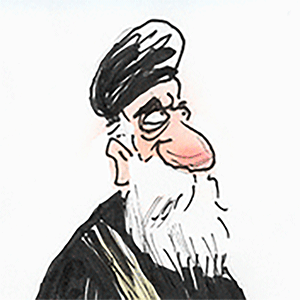A scholar of the Middle East explains Iran's morality police and their history
Published in Political News
By 2012, more than one-third of the 56 countries making up The Organization for Islamic Cooperation had some form of religiously informed squadrons seeking to uphold right and forbid wrong as interpreted by Islamists in power.
In Iran, the morality police first appeared in the form of what was called the “Islamic Revolution Committee” following the 1979 Islamic Revolution. Ayatollah Ruhollah Khomeini, the Shiite cleric who led the revolution, wanted to control the behavior of Iranian citizens after too many years of what he and his fellow Islamists called a period of “secular Westoxication.”
The Islamic Revolution Committee, called “Komiteh” by many Iranians, was merged in the 1980s with the Gendarmerie, the first rural police force overseeing modern highways, to form the Law Enforcement Command of the Islamic Republic of Iran. In 1983, when mandatory veiling laws were passed, the Komiteh was tasked with ensuring these laws were upheld in addition to their other duties of ensuring right and forbidding wrong.
The current morality police – the Guidance Patrol or Gasht-e-Ershad – were given formal standing as an arm of the police force by President Mahmoud Ahmadinejad in 2005.
The group had been steadily growing in size since the 1980s, and by 2005 consisted of more than 7,000 officers. Women make up less than a quarter of the squadron but frequently accompany their male counterparts, who often arrive in unmarked vans and pour out into the streets in green uniforms. The women, meanwhile, wear black cloaks that cover them from head to toe.
For most of the 1980s and 1990s, the Komiteh was comprised of religiously devout followers of the regime who joined the force at the encouragement of clerics. However, by the early 2000s, Iran’s population was comprised mostly of young people. When Ahmadinejad made the Komiteh an official police force, a number of young men joined to fulfill their mandatory military conscription. This younger generation was more lax than their older counterparts, leading to inconsistent patrolling.
When President Ebrahim Raisi came to power in 2021, he emboldened the morality police to engage in harsh crackdowns on the Iranian populace, particularly in the cities. Raisi, like Khomeini and other clerics, used this vice squad to send a message to Iranian citizens that the regime is watching.
This clampdown, particularly when it led to the death of Amini, has been met with outrage by a large number of Iranians. While it is not yet confirmed whether or not the morality police have been disbanded, protesters are continuing to press the regime for change.
This article is republished from The Conversation, an independent nonprofit news site dedicated to sharing ideas from academic experts. It was written by: Pardis Mahdavi, The University of Montana. Like this article? subscribe to our weekly newsletter.
Read more:
Asexual Latter-day Saints face an added dilemma: Finding their place in a tradition focused on marriage
Unrest across Iran continues under state’s extreme gender apartheid
Pardis Mahdavi does not work for, consult, own shares in or receive funding from any company or organization that would benefit from this article, and has disclosed no relevant affiliations beyond their academic appointment.







Comments